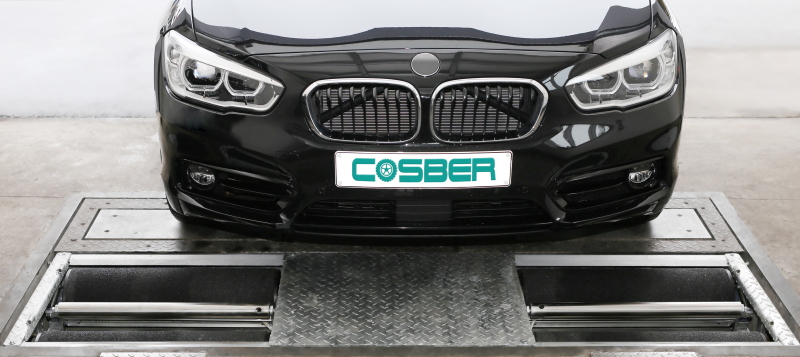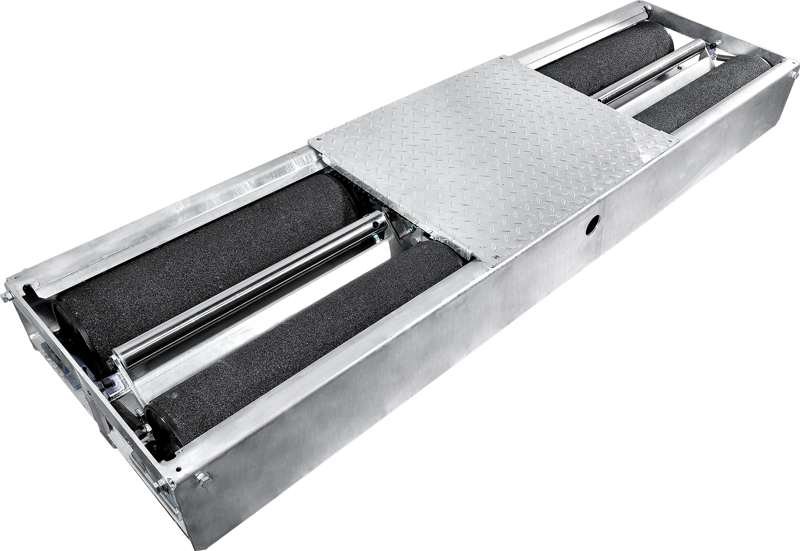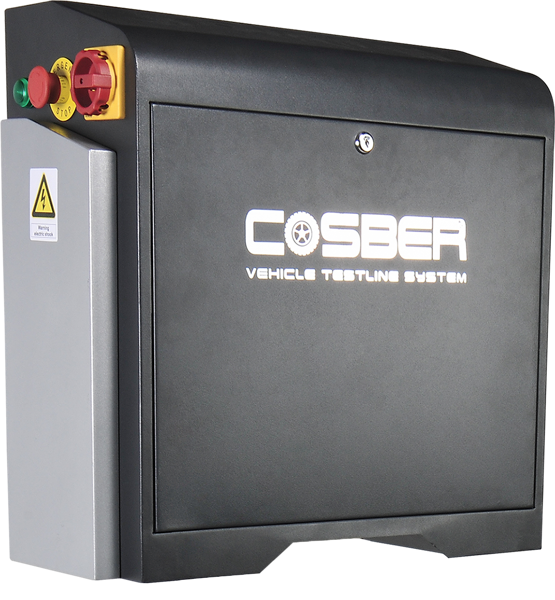Brake Testing Stands
- SKU:
- RP-C-BPSPKW_KONFIGURATOR
- SKU:
- RP-C-20-31-15-0007
- Shipping weight:
- 346,00 kg
- SKU:
- RP-C-20-61-15-0013
- Shipping weight:
- 346,00 kg
Professional brake testers from RP-TOOLS
Like all parts of motor vehicles, the brakes and braking systems must be checked from time to time. Otherwise, possible weak points, wear or defects cannot be detected in time and may lead to dangerous accidents. To be able to reliably check both the service brake and the parking brake, you will find special brake test stands in the RP-TOOLS online shop. These naturally comply with the currently valid EU directives and enable the exact compliance with the prescribed values and characteristics.
Different brake test stands under the magnifying glass
Vehicles that are to comply with the European specifications must be regularly checked for the braking performance of their braking systems as part of the general inspection. The approved aids and inspection procedures here include above all so-called plate and roller brake testers, although the approval of plate brake testers does not extend to all EU countries. In addition, roller brake testers have additional advantages which are driving plate brake testers further and further out of workshops and test centres.
Roller brake tester - the better brake tester?
The biggest advantage of roller brake testing systems over plate brake testing systems is the different way they work. During the test on a plate brake tester, the vehicle to be tested must be in motion and brought to a stop precisely on the permanently installed plates of the brake testing system. This procedure has many disadvantages. For example, vehicles have to be reopened again and again to repeat the brake test.
Roller brake testers, on the other hand, allow the brake systems to be checked while the vehicle is stationary. The rollers of the test system installed in the floor of the test hall or workshop always test and move the two wheels of an axle. This method allows the simulation of roads of any length, which also has a positive effect on the results of the test. Brake tests can be repeated as often as required on this system without having to change the initial situation. In addition, the test results more accurately reflect the actual braking effect.
Testing the braking procedure
The operation of a roller brake tester is a well thought-out test procedure that is precisely adapted to the specific needs of a general inspection. The brake testers usually consist of two pairs of rollers, the drive rollers, which are located next to each other and each of which holds one wheel of an axle. Additional sensing rollers between the drive rollers ensure a controlled motor start of the driving electric motor. This prevents the brake tester from being started without the wheels resting properly on the ground.
Once the vehicle to be assessed has completely and correctly driven onto the test facility, the drive rollers set the wheels of the axle to be tested in motion. A person in the vehicle can now actuate the brakes on a signal. The braking force of the wheels generated by the brakes now generates a restoring torque at the drive rollers, the force of which is in turn transmitted to the electric motor of the brake tester. In order to be able to use this energy further for measurement, the motor is mounted movably. It is rotated by the braking torque. This specific movement can now be picked up as a force impulse by a measuring lever on the measuring element of the roller brake tester and converted into an electrical signal. The electrical signal can now simply be transmitted to the corresponding display of the brake tester and output in analogue or digital form.
Order brake test stands simply online now
Since the roller brake tester is one of the static test procedures, driving speeds of 2.5 to 7 km/h are simulated here. The procedure also allows the brake force to be tested up to the locking point, but intermediate values can also be taken and evaluated without any problems. This makes it easier to detect irregularities that indicate weak points, deformed brake discs or similar.
In addition to high-quality brake test stands, the RP-TOOLS online shop offers you a comprehensive selection of other devices and machines for your workshop or test center. Furthermore, we complete our range with consumables and wear material for almost every requirement. Please contact us by mail, phone or chat if you have any questions about our product range, comments or hints. We are happy to assist you with advice.










